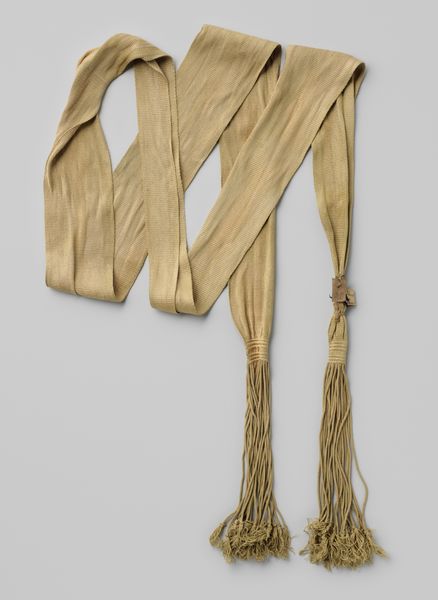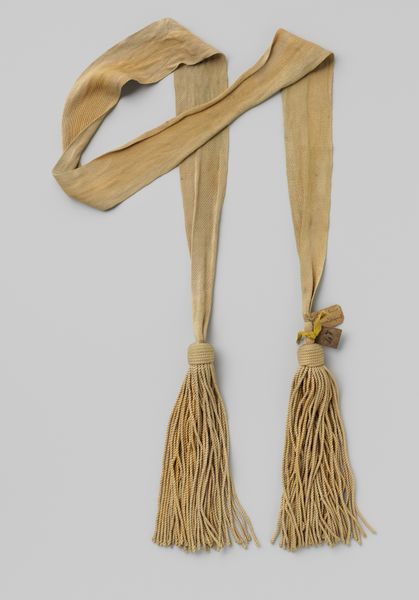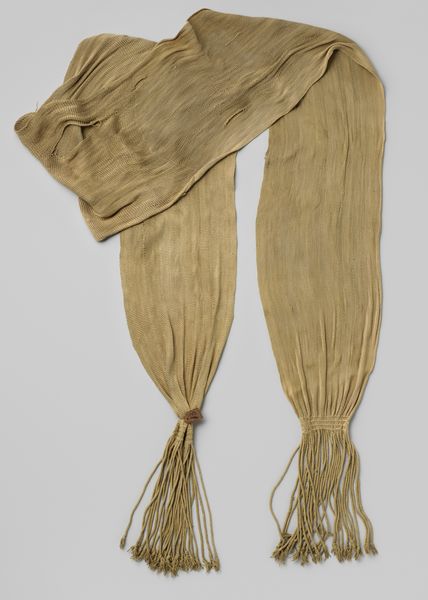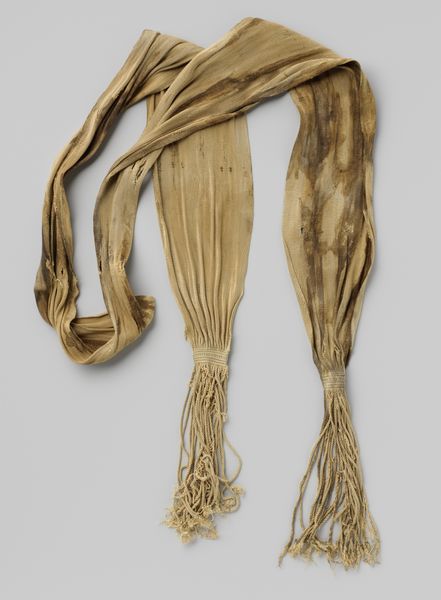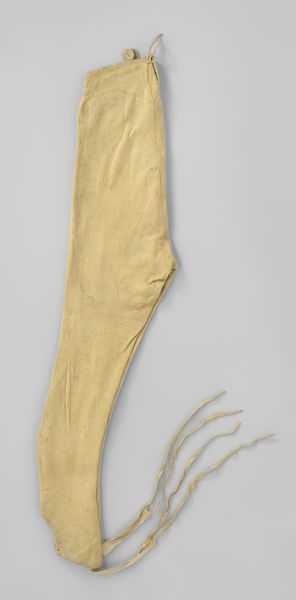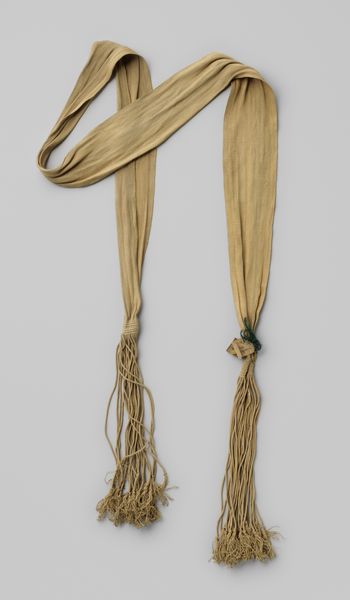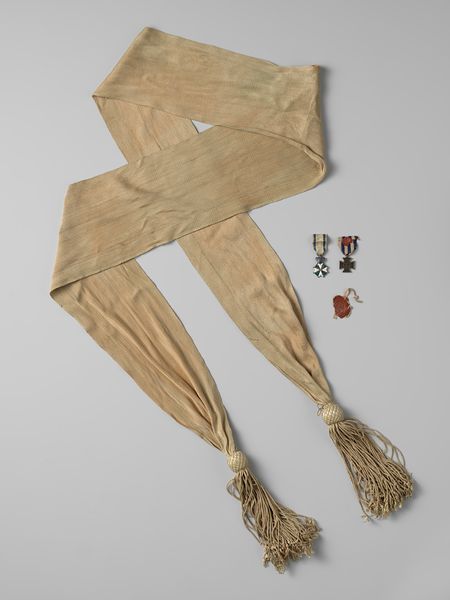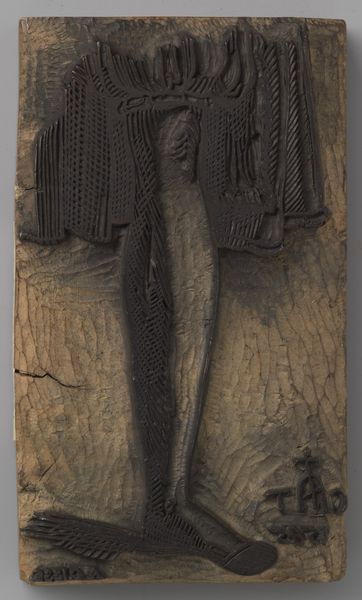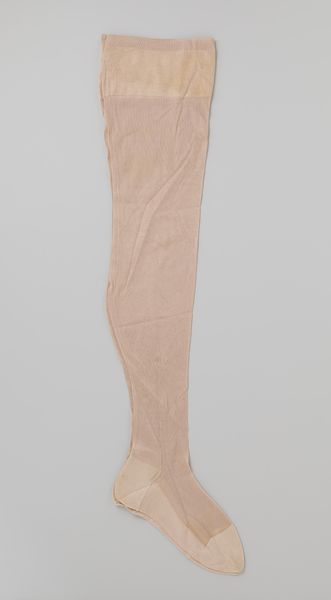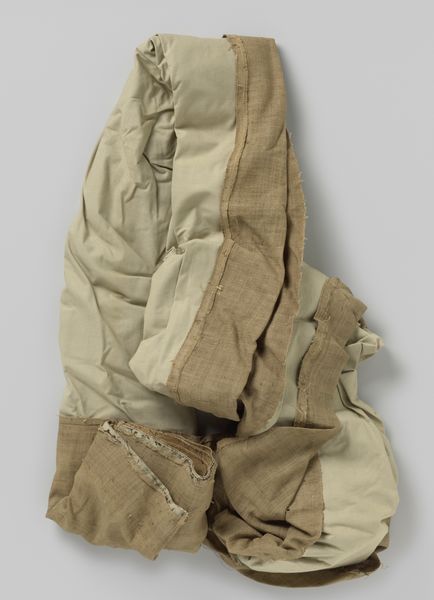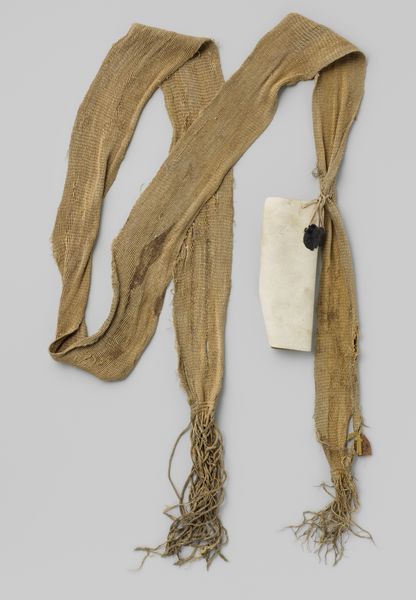
Sjerp van oranje zijde gedragen door J.W. Kerkhoven, in 1830/32 Luitenant Kolonel 1815 - 1830
0:00
0:00
silk, weaving, textile
#
silk
#
weaving
#
textile
#
romanticism
Dimensions: width 88.5 cm, height 7 cm, depth 62 cm, length 279 cm, width 10 cm
Copyright: Rijks Museum: Open Domain
This orange silk sash, dating from 1830-32, was made by an anonymous creator and worn by J.W. Kerkhoven, a Lieutenant Colonel at the time. The sash’s muted orange hue and soft silk texture speak to its age and history, yet it is the linear structure of the textile that demands attention. The regular, parallel lines woven into the silk create a subtle rhythm across the fabric, a structure that both defines and softens its form. Knots punctuate the ends of the sash, giving way to a delicate fringe. These elements introduce a controlled chaos, disrupting the linear pattern with a tactile sense of movement. Consider how the sash, a symbol of military status, is rendered with a certain fragility through its material and design. The sash operates as a signifier of power and authority. Its delicate silk and muted color challenge fixed notions of martial strength. The artwork destabilizes the established meaning of power. Through the use of silk and linear design, it invites a reinterpretation of value within cultural and historical contexts.
Comments
No comments
Be the first to comment and join the conversation on the ultimate creative platform.
